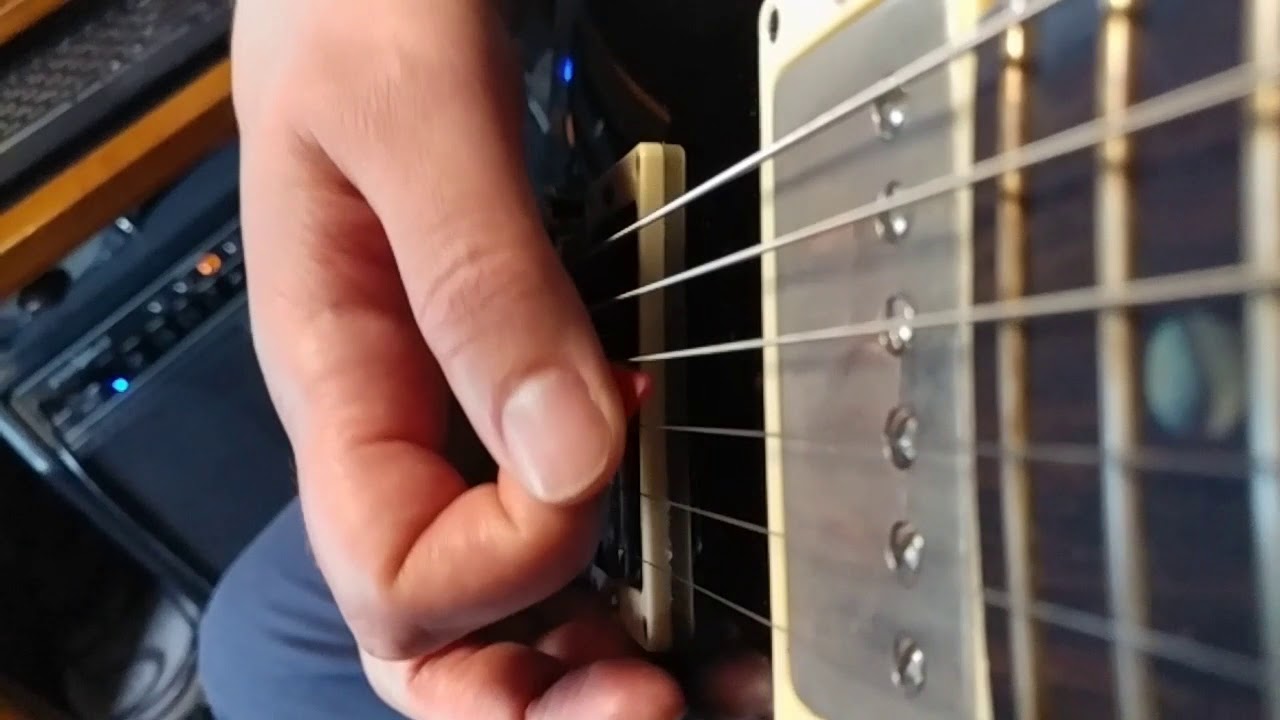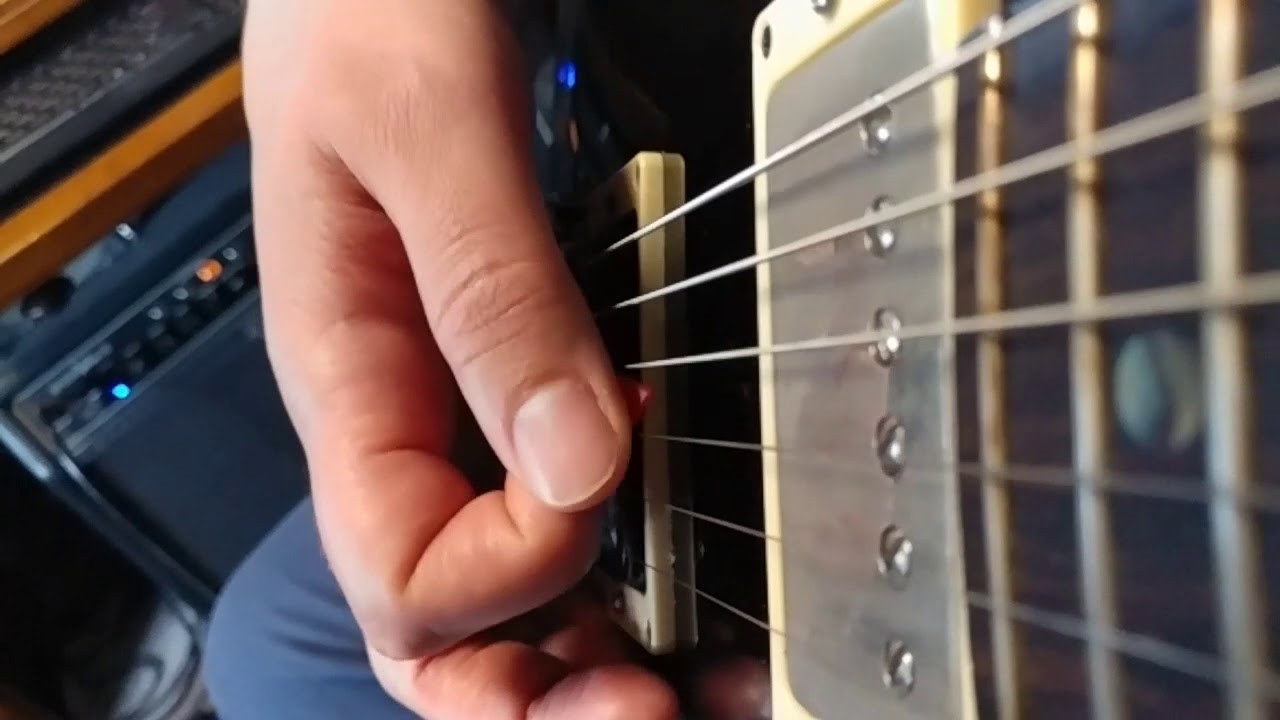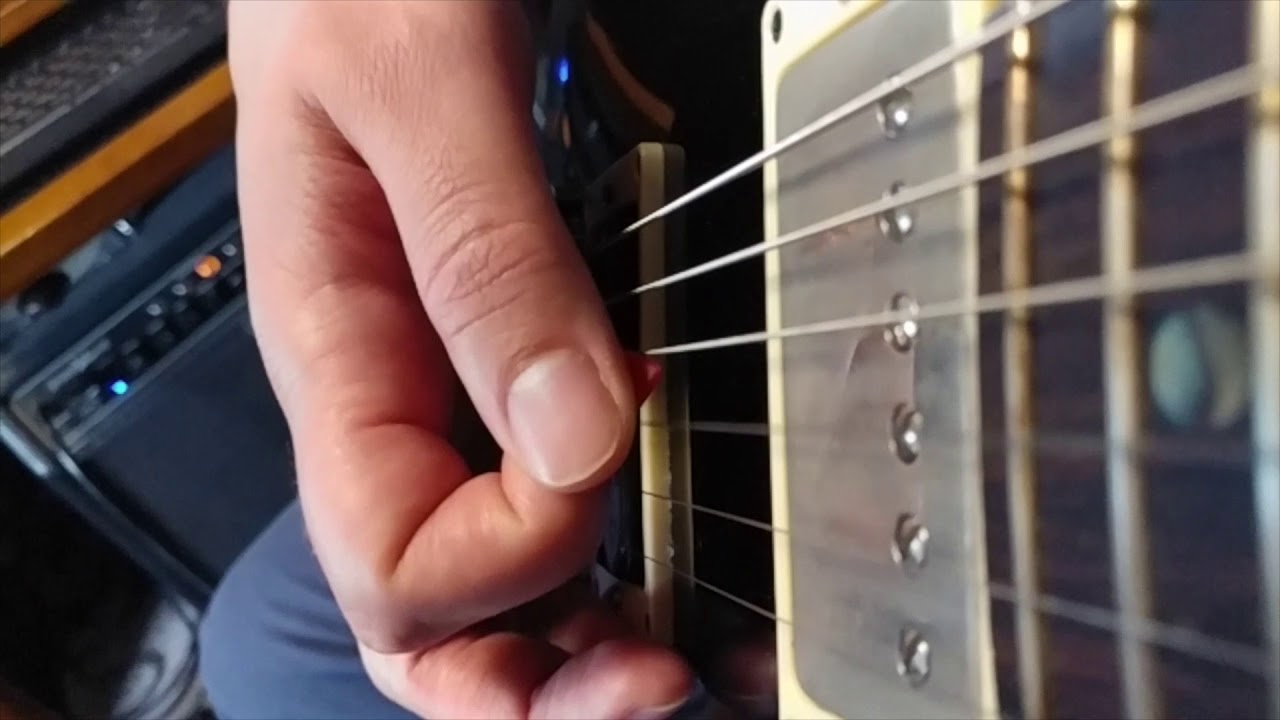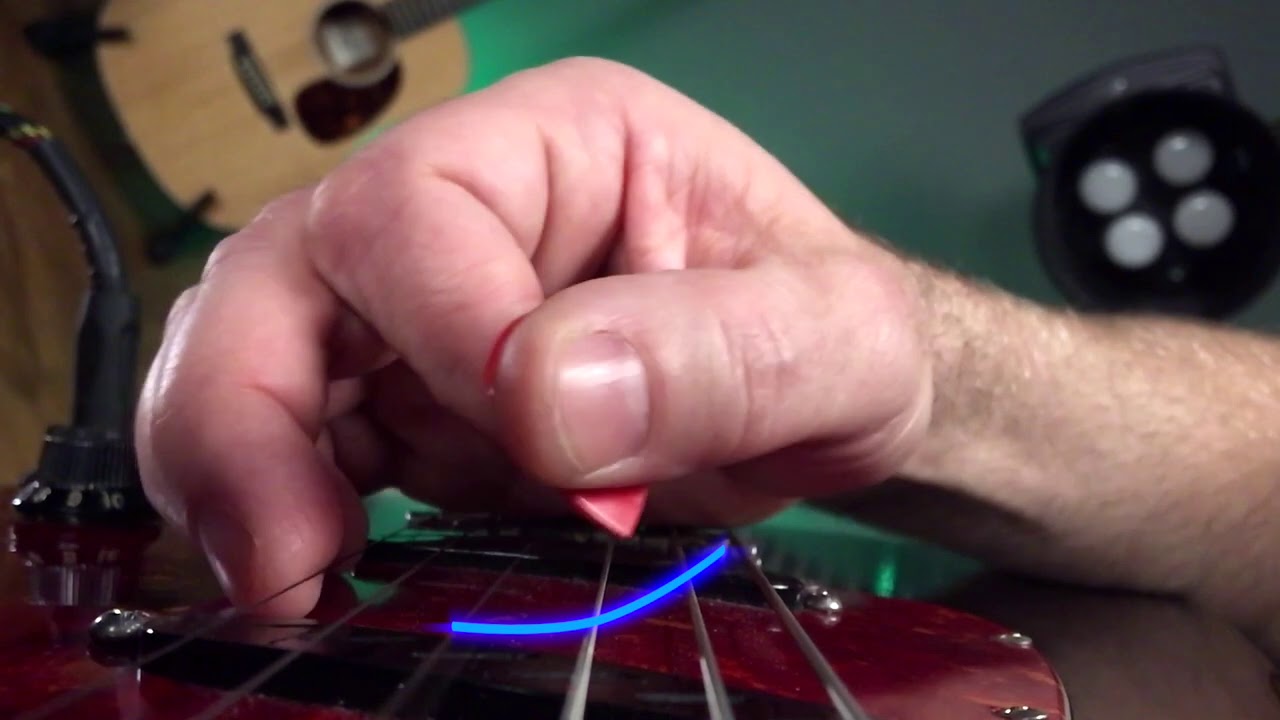Ok the dropbox link is on its way to you
Man I’m getting excited as well 
We should turn this into a YouTube series. Troy should just go full clickbait with the channel:
“TOP TEN TIMES JOE THOUGHT HE WAS USX, BUT WAS ACTUALLY DSX”
“98% OF USX PLAYERS CAN’T TELL IF THEY MAKE THIS MISTAKE… CAN YOU?”
“HE TRIED TO USX, THEN THIS HAPPENED (PICKING GONE WRONG)…”
“JOE IS ACTUALLY DSX (NOT CLICKBAIT)”
“$0.25 pick versus $75 pick!”
Ok so there might be some audio out of sync here, which might make this hard to analyse, but looking at this already sped down version at 0.25 speed (yeah you’re playing crazy fast  ), to me there seems to be very little slant in the motion at all. I can see swipes in both directions as well as completely missing of both strings right at the string switching. So I’m not sure what to conclude from this, since your playing sounds great to me, and there are others that play with almost no slant that sound just great as well. But if there is a feeling of hick ups at times, this might be the reason.
), to me there seems to be very little slant in the motion at all. I can see swipes in both directions as well as completely missing of both strings right at the string switching. So I’m not sure what to conclude from this, since your playing sounds great to me, and there are others that play with almost no slant that sound just great as well. But if there is a feeling of hick ups at times, this might be the reason.
Yeah we are wrestling with some technical difficulties on the exports. Here’s one I exported that’s 50% the entire time so it should be more even:
Full speed version with no slow down processing:
Thanks! Strangely enough, the first part of this video has cleaner switching (efter upstrokes) but also shows a general motion that looks more downstroke escapeish. Look at the pick motion against the beige pickup ring. The pick generally travels towards the pickup side of the ring on downstrokes, and more toward the body side of the ring at upstrokes. So if exaggerated, that motion should clearly escape on the downstroke. Still you’re making clean string changes after upstroke. I have no idea how this works.
So 2 questions, just for my own sanity:
- Does anyone else think I’m starting each down beat with an upstroke?
- Does anyone think I’m not using rest strokes (that bury in the string positionally beneath the string I just played through)?
Not sure if this matters, I hold my guitar like a classical guitarist, since that’s how I’m trained. That puts it more in front of my body than the typical rock posture. It also does not sit flat against my body. There’s about a 45 degree angle, like this guy shows:

Could that give me the clearance I need to be making the string changes?
Cuz I agree on paper, this shouldn’t work. I got here by just trying to move my hands as fast as I could and this feels relatively smooth to me. Nothing I posted I feel is my cleanest. Crazy how a decade away from the stage gives me red light syndrome lol! Every time my wife was ready to film me I was like ‘ok film me. no no no stop I’m not ready. Ok I’m ready. No it’s falling apart stop again’ hahaha
Prior to a couple days ago when I started asking for help with this, I could do what felt like good takes of the pattern pretty regularly.
Thanks so much for sharing these Joe! Not everyone wants to look at themselves in super detail so we appreciate the learning opportunity. This is cool playing and you should be proud of having developed this by feel the way you have.
We couldn’t get the original file extracted, but here’s a much more detailed 10 percent speed reconstituted from the slowest the Android app would do it, plus the full speed audio synchronized and slowed down to match. You know you’re a nerd if you really want to watch all the way through this!
So it’s interesting what’s going on here. The motion path appears to fluctuate, and I think @qwertygitarr is on point here. A lot of the time it’s trapped, where you can see the pick below the string plane on both sides of the string you’re picking. Then there are times when it appears more downstroke escapish, to use @qwertygitarr’s term. There are times where the usptroke definitely escapes, there are times when it doesn’t and swipes, and there are even times when the pick appears to miss both strings entirely during the string change.
As far as missing the strings entirely, if you rewatch some of the scale clips from the original Michael Angelo Batio interview like this one, Mike actually does this:
Mike only picks twice on the B string. You hear three notes, you just don’t see three pickstrokes. I don’t think anyone has ever mentioned this and I sort of let it slide. But it’s not a mistake. It’s very consistent and he does it in Tk2 of this, and basically any other time he does ascending scale playing.
Anyway, back on topic, this motion is basically almost parallel. That’s the big picture. It doesn’t have much of an escape angle one way or another. Among the players we’ve filmed who looks somewhat similar to this is Jorge Strunz, who swipes most of the time. There’s some cool closeup shots of Jorge in the Primer material here:
But there are also times in Jorge’s playing he actually does appear to get over the string, although the joint motion he uses for this isn’t really obvious.
In this case, we see the arm moving which would be elbow joint. And given the flexed wrist, some type of wrist motion could easily be responsible for any of the escapes that we do see, especially given how little joint motion would really be required to cause it. The tolerances here between escaped and not are really very small so it’s kind of academic which joint is doing it. We know it’s easily possible, even if we can’t really measure what’s doing it.
Another style of motion that can look similar to this is mixed escape wrist playing, where you keep the forearm relatively stationary and you just use the two different directions of wrist motion to get the different escapes. Here’s @Tommo doing a killer rendition of petnatonic triplets which we put up on Instagram recently:
You can see in this playing that the motion is also flat, and really only needs a little bit to escape in both directions when needed. It’s not a very obvious escape motion and it’s the kind of thing where if a great player did this and didn’t know how it worked, I could easily see them not knowing and just saying, it’s alternate picking what more do you want?
Anyway, the general point here is that there are indeed shallow escape motion styles which either appear trapped or so shallowly escaped that they might look like what we’re seeing here. All of which is to say that this isn’t on its face problematic. Quite the opposite, overall I think this is really cool playing. If there weren’t these concerns about feeling speed limited I wouldn’t even bother with trying to change this.
But since we do have those concerns, what I’d suggest is that the sort of randomness of this makes me think there might be some smoothness still left in the tank if you tried a motion that didn’t have these little variations, and looked more like a textbook single-escape motion like Brendon’s.
So… same recommendation. Try out Brendon’s form, see if it looks more obviously “elbowy” in terms of having a more consistent DSX path when you film it up close. If it does, and it feels smoother and faster automatically, then maybe we’re right here.
Still doesn’t mean I’d get rid of this. You can keep this technique around as a kind of cool alternative, and who knows, maybe by working on some other motions there will be some follow-on benefit to this one getting smoother and more consistent in some way.
Either way, thanks for sharing this, it was very interesting!
I wonder what would happen if I record myself. I think that I’m doing USX but being an ex-elbow player… It’s pity I don’t have slo-mo
May be I should try elbow tricks too?
I told you, non escape motion has its future ) From one point of view - not enough slanting to do pronounced escape motion, from another point of view - not enough slanting to be buried deep between strings (I refer to trajectory slanting here). Old good ‘use the very tip of your pick’ approach
In re-watching this, it actually kind of looks like a very shallow escape USX motion, kind of like this comparison here from the Primer:
The first of these two motions is more wrist joint and less forearm joint and that’s why you have a path which moves closer to parallel and doesn’t clear the other strings by much. If you simply did that motion with less of a flex, and a little elbow motion, you could probably get a result similar to what you’re seeing in your clip.
I really wouldn’t worry about how “deep” in the strings the pick goes. Being more or less vertical doesn’t have any relationship to efficiency that I can think of, it’s just a function of certain joints like forearm which operate in a different plane.
The one thing we’ve discussed about more vertical motions is that they might be more resistant to the difference between inside and outside picking, especially over longer distances like string skips. With a more Gypsy type technique, the pick moves almost perpendicular to the strings, while the tracking motion moves more parallel, so the vectors don’t sum. So inside picking doesn’t feel like you’re slamming into the target string as fast as with a more parallel picking motion.
This makes me less discouraged and maybe I don’t need to take a couple weeks off now lol. Sincerely, thanks for that comment.
I’m confused about these 2 comments you made
Does this mean maybe now that I’m more aware of what I’m doing motion-wise, I should roll with what I’ve got, tweaking slightly by adding some wrist, reducing flex, keeping some elbow? After all, what I posted is the fastest I can move my pick. I tried the Brendon thing. Maybe it needs more work. I can’t get that above 170-ish.
Lastly, circling back to the whole DUDU vs UDUD thing. What’s your final word on that? I strongly feel all along I’ve been doing the former. Maybe I had a bad take initially or we had more audio sync weirdness that made you come to that conclusion that I was always doing UDUD. Or maybe we were referring to different sections of my first clips and there were in fact places where I lost it. I don’t feel I’m a rhythmically challenged individual and all the practicing I’ve done on this exercise (which I now officially hate lol) I always feel I’m pretty well on the click, always with a downstroke. I ask because that diagnosis seriously shook me as it was so drastically different from how I perceive what I’m doing.
Thanks again for all the time you put into my critique. I love your site!
The audio and the video sync could be part of what I was seeing the first time around. But the other thing is that the motion is a little inconsistent where it really does do downstroke escape sometimes. Like if you watch around 1:30, the last note on the G string is a downstroke goes up in the air. The last note on the string is supposed to be an upstroke so I’m not sure what happened to that note, maybe it’s just legato. But as far as the downstroke itself, that actually looks nice, like what elbow DSX motion looks like when done correctly.
This type of flip-flopping between slightly different motions is super common when you’re still at the stage of trying to learn a new motion and we see it all the time on the forum here. Until you learn to recognize by feel what a particular motion feels like, it is super easy to have this kind of confusion happening.
Considering that consistency appears to be the issue, I’m not sure how we “tweak” this one to be more focused on one motion rather than another. But one approach is to simply try a new motion and see if you can get one that moves in a more obviously linear fashion. If that motion is faster and smoother, then (1) you might just stick with it, and (2) maybe this will give you a better idea of what that type of consistency feels like, so you can apply it to any other motion you learn - including the current one.
So, yes, I’m suggesting that if there really is any kind of speed limit happening here, it may be due to a little muscle / joint confusion and not really because you haven’t bursted your way to athletic superstardom yet. I mean, just looking at your playing, you’re clearly not someone who appears speed-limited in the way that we are used to seeing here. So why would there be a phantom limit at something like 180-190? Well, maybe because the motion just isn’t smoothed out yet.
Anyway, now you have an idea of what we’re looking for here and you can see how to evaluate it with the tools. If you try some other thing you should be able to film a quick test clip, drop it down to 10-15% in a video editor, and take a look. You can use this phrase, some other phrase - doesn’t matter. Whatever phrase fits the escape type you’re trying to practice.
Keep us updated.
Awesome, totally got it with my path forward then. Thanks so much for hanging in there with me on this and even inviting me to challenge your critique so we could pull out some more details.
Thanks everybody else for your suggestions and comments too! I learned some good things about what’s working and what’s not and I’m excited for what’s going to come next as I explore some actual (intentional) DSX. I’ll be smarter this time and post a clip of that earlier so I don’t stray or waste time.
I don’t get what do you mean by ‘vertical’. Do you mean vertical component of the movement (from/to a guitar body)?
Anyway, picking without moving a pick deep allows me to play 3nps scales, which I can’t do with more deep motion (and that’s why I don’t like the way I do it since I can’t control the dynamics well). I probably use a lot of swiping and stuff, but, nevertheless, once my pick goes deeper - no scales, no alternate picking with odd number of notes per string. And I don’t do DBX or TWPS, just string hopping, but small string hopping.
Last night I gave the straight arm, all elbow thing a solid go, just on a tremolo. I was able to do this at 220+ BPM and that’s faster than I’ve ever picked before. When I go at this speed, I feel tension creeping in. 180 - 200 feels ok, like if I got used to it (feels weird since it’s new) I could probably play it with near total relaxation.
I’ll film the various speeds to see what you guys think, just to make sure I’m on the right track. I think I am, but I’ve been wrong before. Like, constantly lol. If this is as kosher as I think it is, I guess now I’ve got a different problem: getting my left hand to keep up  That should just be chunking to the rescue though, I’d think.
That should just be chunking to the rescue though, I’d think.
Nice work. 220 is very fast. Petrucci doesn’t even go that fast on that one part of Rock Discipline where he tests with a metronome. So I think you’re fine on speed here.
If by “tension” you just mean you feel something, then sure, you’re going very fast. If you can do that for two or three bars of sixteenths, most real-world articulate lead lines just aren’t that long. I would be concerned more about being able to play smooth, synchronized lines with comfort in the 190-200 range for a bar or two. If that’s working, then there’s probably nothing specificaly “wrong” what you’re doing.
Try that out on a phrase that switches strings and do the up-close filming to check what the motion and escapes actually look like, just to make sure it’s doing what you think it is.
Ok thanks. Since I first need to make sure the motion itself is ok, would it make sense for me to film a tremolo and make sure I’m escaping and not trapped? It might take a couple weeks to sync my left hand since I’ve never even played anything at 190 before, so doing something that changes strings at that speed I won’t be able to do just yet.
Just trying to minimize time wasting. If that motion mechanic is fast (it is) and smooth (it feels like it) but I am double trapped, I need to adjust. As we learned, I thought I was USX and we saw I was just barely clearing the strings. Hope that concern makes sense.
I’d film both. If you find out that you’re trapped while tremolololoing that doesn’t mean that you don’t do something different while playing a multi-string phrase. As we’ve seen, your hands can be pretty wily. In a good way!
When you film these clips, try to include a defined start and end point with a little dead time before and after, even if it’s just a second. When you can’t see the first note it’s sometimes hard to know which sound matches up with which motion. They can still be short clips, just with a beginning and end.

I’ll get to work on that. I found a pattern I can almost play at those speeds.




